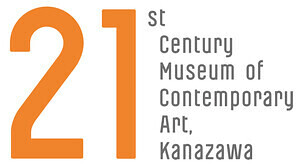May 3–July 10, 2022
1 Chome-2-1 Hirosaka
Kanazawa, Ishikawa 9208509
Japan
Hours: Tuesday–Sunday 10am–6pm,
Friday–Saturday 10am–8pm
T +81 76 220 2800
F +81 76 220 2802
press@kanazawa21.jp
The 21st Century Museum of Contemporary Art, Kanazawa is pleased to announce Kacchu Anatomy ― The aesthetics of design and engineering. Presented in Kanazawa, a city embedded with the legacy of the Maeda clan of the Kaga Domain, it aims to curatorially update the cultural assets of historical Japanese armor, Kacchu. The exhibition summons Kacchu into a contemporary context, echoing Jacques Derrida’s concept of the revenant.
Originally introduced to Japan from continental China, Kacchu has undergone a stylistic evolution unique to Japan dating back to the Kamakura period. The Azuchi-Momoyama and Edo periods in particular saw Kacchu’s design and finesse culminate as symbolic embodiments of samurai’s honor and power. The beauty and originality of the patterns, colors, and techniques of Kacchu, as observed in its design, metalworking, lacquering, dyeing and braiding, hold an outstanding position in the history of crafts and fashion in Japan. Meanwhile, Kacchu has also evolved in tandem with transformations in war weapons and strategies, such as the shift from cavalry to gunfire battles, with intricate, anatomically-minded engineering.
For this exhibition, emerging creators of the digital-age have collaboratively produced the exhibition space in order to bring this allure of design and functionality to the present. Kacchu’s internal structure is CT-scanned by Rhizomatiks, who transfigure the inner “structure, beauty, and activity” of the armor into a digital video enabled by data-visualization. These elements are classified into three sections in the video: anatomy, seduction and fighting. The last section, which unfolds inside the armor, is a visualization that uncannily conjures an image of the body’s fight against a virus. Berlin-based artist Nile Koetting designs the exhibition space that ambiently channels Kacchu’s elements to our contemporary bodies. Employing performative installation as a method of expression, Koetting’s scenography has both humans and matter performing alike in the same space, all at once. Displayed in transparent, acrylic fixtures positioned at the eye level, Kacchu in ambient lighting emerges like a “mirror to the physique” in front of the viewer. Here the machismo of Samurai is deconstructed, exposing a fragile physicality in a hyper, malleable space marked by a sense of translucency, lightness and ambiguity.
Moreover, the exhibition presents sneakers as a contemporary Kacchu—a medium connecting contemporary individuals to the historical armor. Sharing symbolism, aesthetics and engineering in common with Kacchu, sneakers have come to symbolize spiritual survival in contemporary life the way Kacchu used to in its era. On display are artworks that embody such engagement with sneakers: Shinichi Miter’s artworks are entirely made of sneaker parts, while the first collaboration between HATRA x MAGARIMONO manifests as newly-created 3D-printed sneakers inspired by Kacchu’s patterns and designs.
The exhibition attempts to renew the presence and performativity of Kacchu in order to bring the armor to the present. The visitors are invited to encounter an unpredictable phenomenon created by the collaboration between the historical and the contemporary.
Website specially designed for this exhibition by featuring artist Rhizomatiks.
Exhibition Catalogue (English/Japanese bilingual) will be published in June, 2022 by Culture Convenience Club. Co., Ltd.; Printed in Japan; ISBN: 978-4-568-10546-9; Sales Contact: Bijutsu Shuppan-sha Co., Ltd. (5F, Meguro Central Square, 3-1-1 Kamiosaki, Shinagawa-ku, Tokyo 141-8203 JAPAN, T +81 3 6809 0318).
Organized by: 21st Century Museum of Contemporary Art, Kanazawa (Kanazawa Art Promotion and Development Foundation), Japan Arts Council and Agency for Cultural Affairs, Government of Japan. In special cooperation with: Eastern Culture Foundation, Ii Museum, Ishikawa Prefectural Museum of History and Osaka Castle Museum. Curator: Yuko Hasegawa. Assistant Curator: Yuu Takagi. Conservator: Kunihiko Aizawa.








